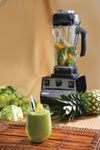Creating a Family Cookbook
A wonderful gift for family and friends, a family recipe book is a wonderful way to combine favorite family dishes with memories of treasured family moments and members. But how to turn those family culinary favorites into an actual family cookbook?
Most families have favorite recipes that evokes memories of family get-together or of a special family member. These recipes have been handed down through generations. Some recipes are just on scraps of paper, index cards that may have be shoved into cookbooks, or drawers.
A family recipe book is a collection of timeless recipes that grandma, friend, aunt, mother, or dad may have given us. How do we turn these precious recipes and memories into a family cookbook?
First we need to collect these timeless treasures by sending out a letter to the family members and friends, asking everyone to send back at least one recipe or more. It would be great if they could add a story or and or photo and date to go with the recipe.
To cut down on the workload of creating and formatting, we will send out a fill-in-the-blank recipe form so they will not leave out any ingredients or special instructions like cooking temperature. The form will have a place to write why this recipe was chosen or add any family memory.
The Recipe Form
Name of the recipe
Name of the person who originated the recipe (if different from the submitter)
Name of the person contributing the recipe
The history of the recipe (Where did it come from and why is it special?)
Ingredients and quantities needed, in the order in which they appear in the directions
Cooking directions
Prep time and cooking time
The number of people the recipe serves
Any special cooking tips or advice
The best way to get these recipes are by email, this way you can cut and paste the recipes in the final document. Most everyone has a computer or they may mail the recipes.
The photos can be scanned or emailed from the computer. Also a photo sharing site would make it easier for all to upload their photos.
Set a deadline for at least a few weeks to gather their recipes, but not so far out in the future that they forget about it. Send a short reminder postcard or email a week or two before the final deadline.
You may want to sell the cookbooks to help with the costs. You could offer free copies to those that sent recipes, stories and or photos.
Organizing the Recipes
Some suggestions:by holiday - , Family reunion, 4Th of July, Thanksgiving, Christmas
by individuals - grandparents, cousins, etc. by family - by family unit (Mom, Dad & kids) or branch of the family tree (Grandma, Grandpa and all of their descendants)
Assembling Your Recipe Collection into a cookbook
After you have collected and organized the recipes and stories, now is the time to sit down and design the cookbook. The theme can be an old family photo of a distant ancestor,something which reflects your family, a photo from a recent family reunion, or something that celebrates your family's country of origin or ethnic heritage.
There are two major options: you can either photocopy the original submitted forms (transcribing the ones sent by email) or you can type everything into the computer for a more consistent format.
To make your cookbook easy to read, create both a Table of Contents and an index.
Stick to simple fonts like Times Roman or Aerial that are easy to read if you decide to use you own computer. Decorative fonts can be used for chapters and recipe titles. The photos and stories should be put in places throughout the cookbook, where they enhance the recipes without obscuring them (on adjoining pages, for example).
Publishing Your Family Cookbook
If only a few copies are to be made you may be able to print and assemble the cookbook at home yourself. Folders or three ring binders make good covers so more recipes can be added later. Plastic sleeves could be added to keep the recipes free from spills.
If there are numerous copies to be made you may want your local copy shop to do the job. The various options include glued bindings, or spiral bindings, plus there are different paper types, etc. The cost will depend on the estimated copies required.
Tips for adding family history into your cookbook
Family heirlooms that relate to cooking can be copied or scanned as background behind a few of the recipes. This could be poems, awards, newspaper clippings,a hand written copy of great grandmother's or great aunt's recipe or table liens.
The introduction to the cookbook should included the date and share the details of its creation and how the family members responded to this project.
What a great way to bring families together and have a great collection of memories that last a lifetime.
Have Fun!
INSTANT PARTY IDEAS
Subscribe to:
Post Comments (Atom)







No comments:
Post a Comment